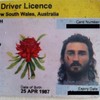Photo by Spencer Archibald
Advertisement
A 2013-2014 season brawl between Wanderers and Victory fans in MelbourneTen days after the drama of the Sydney Derby, I turn out to watch the Western Sydney Wanderers take on another old foe, Melbourne Victory. Both teams lay claim to what are among the largest and most loyal supporter groups in the league. At their clash last season, the two groups played out a vicious running brawl in Melbourne's CBD. In footage that shocked sports fans, supporters can be seen hurling chairs, sticks, and various other debris throughout the roaming melee. Understandably, police aren't taking any chances this year.The red and blue lights of a police helicopter flash in the dusk as it scans surrounding parkland for disturbances prior to kick off. The police presence is immense. Half a dozen are stationed outside the Collector Hotel, home of the Red and Black Bloc (RBB). The RBB are West Sydney's hardcore supporter group and have been blamed for much of the trouble by authorities and certain sections of the media. Police horses, dogs and riot vehicles are massed around the stadium and police carry out aggressive body searches as the crowd enters gate 56, the RBB's favoured end. At the opposite end of the stadium, a small but boisterous squad of Melbourne Victory fans are threatened to be outnumbered by the police and security guarding them.
Advertisement
Advertisement
Hooligans are renowned for their uniforms. They identify each other through dress. For decades that uniform has been upmarket European designer labels, the likes of Lacoste, Fred Perry, Adidas, and Ralph Lauren. It tells you who's down to fight and who's backing you up in the event of one. Some also suggest the expensive brands are intended to fool police, a trend you can trace back to the late 70s when hardcore Liverpool fans travelled Europe supporting their team in the European Cup, and looted expensive French and Italian designer stores on their days off.Whether this last part is true of the RBB is unclear. They don't talk to media. My one contact within the group speaks only on a condition of anonymity and says he'd rather if he wasn't quoted at all, "cos it'll be my head on the chopping block if it gets out," he says.After a few beers, the RBB usually heads out on its traditional match day march, heading past the bustling eateries that line Church St—where the infamous showdown between a mob of angry West Sydney fans and a couple of FC fans dining in a restaurant played out in 2013—and on to the stadium. The march didn't happen the day I went for reasons unknown."It's so much better with them here," chirps Thomas, a 12 year old Croatian-Australian Wanderers fan.
Advertisement
Advertisement
